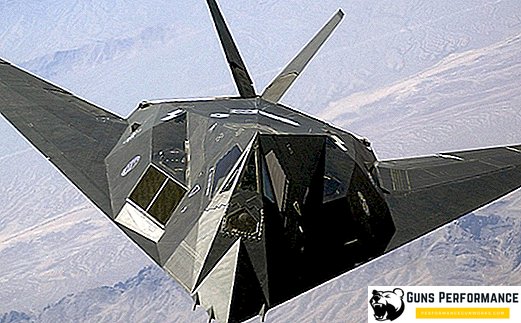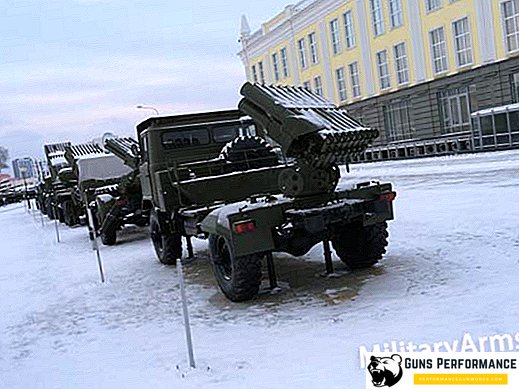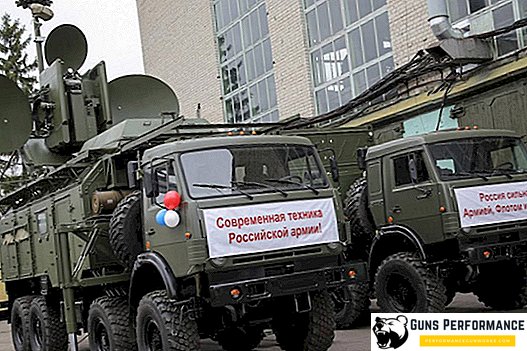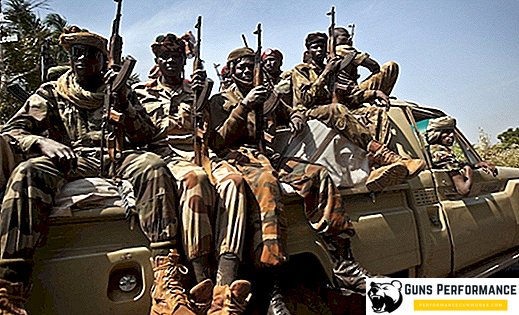On August 1, 2007, two Russian submersibles Mir-1 and Mir-2 dived in the region of the northernmost point of our planet - at the North Pole. At a depth of more than four kilometers, Russian submariners set the state flag of Russia, made of heavy-duty materials. The course of the expedition was widely and extensively covered by the central Russian media, the installation of the flag was broadcast live, and the houses of the polar explorers were greeted as heroes.
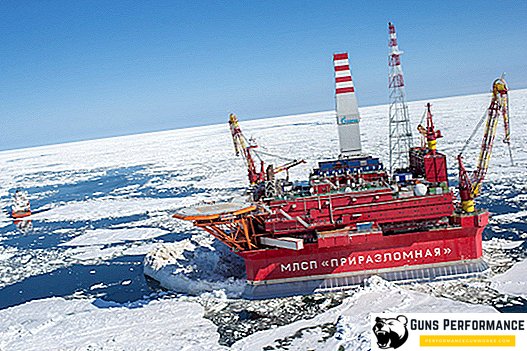
This political action in the spirit of the XVI or XVII century caused the expected negative reaction from the states that have interests in the Arctic region. The representative of the Canadian Ministry of Foreign Affairs, for example, said that those days had passed when it was possible to stake out a territory by setting the national flag on it.
In recent years, the confrontation in the Arctic has increased significantly. There are several reasons for this, the main one is the uncertain status of the borders in this region, as well as its importance in strategic terms. Some experts even scare the inevitable armed conflicts that may begin when the "Arctic pie" is divided in the future. Nowadays, interest in the Arctic is shown not only by the states bordering this region, but also by China and India - countries located far from the eternal Arctic ice.
The Arctic occupies a significant place in modern Russian foreign and domestic policy. Several state programs have been adopted for the development of this region, and infrastructure facilities that have been abandoned after the collapse of the USSR are being restored. It finds ardent support in Russian society, the strengthening of its presence in the Arctic is served by the authorities as evidence of the increasing power of the country. Is it so? Does Russia need the Arctic, and what are the current geopolitical trends in this region? What is at stake?

Arctic: because of what fuss
The modern world is developing rapidly, countries that were considered as outsiders a few decades ago, are now becoming leaders. For the economy to develop, resources are needed, which is becoming less and less.
This is one of the main reasons for the increased interest in the Arctic region. So far, no one knows exactly how much wealth the Arctic keeps in itself. According to the calculations of the US Department of Energy, up to 13% of undiscovered oil reserves and a large number of gas fields are under icy waters. In addition to hydrocarbons, there are significant reserves of nickel ores, platinoids, rare earth metals, tin, tungsten, gold and diamonds in the Arctic.
In the modern world, not only raw materials are valuable, but the communications through which they are delivered are no less important. There are two major trans-oceanic routes in the Arctic: the Northern Sea Route (NSR) and the Northwest Passage, which connects the Atlantic and the Pacific Ocean.

Both resources and potentially important communications have always existed, but the intensification of the struggle for the Arctic did not begin more than ten years ago. What is the reason?
The richness of the Arctic latitudes is almost completely leveled by the climatic conditions of the region. The nature of the Arctic is extremely hostile to man. Most of the year the Northern Sea Route is covered with ice. The cost of mining is so high that the development of most deposits is not profitable at the moment.
However, due to global warming, the situation in the Arctic began to change. The ice is gradually receding, which opens up access to resources and increases the attractiveness of the Arctic transport routes. There are quite reasonable predictions that by the end of this century there will be no ice in the Arctic Ocean, and this will make the NSR free for shipping all year round.

Also, we should not forget that the North Pole is the shortest route for the delivery of nuclear weapons in the event of a global conflict. It is for this reason that the USSR contained numerous military bases and airfields in subarctic latitudes. For the Russian Navy, the Northern Sea Route provides free access to the World Ocean.
Russia is increasingly loudly announcing its claims to the Arctic region, increasing its military potential in the area. The situation is aggravated by the fact that the status of the Arctic is largely unresolved and has serious gaps.

Who claims to be the Arctic
According to international law, each country has the right to use underwater resources at a distance of 200 miles from its coast. However, there is a UN convention that says that if a country can prove that the ocean shelf is a continuation of its continental platform, then it will be considered its property.
Russia believes that the underwater ridge of Lomonosov is a continuation of the Siberian platform. In this case, under the Russian jurisdiction falls 1.2 million square meters. km of shelf with huge hydrocarbon reserves.

It is clear that such activity of Russia in the redistribution of borders in the region does not cause delight in other subarctic states. Today, the Arctic Council includes 8 states:
- Iceland;
- Denmark;
- Sweden;
- Canada;
- Norway;
- USA;
- Russia;
- Finland.
There are also several observer countries: China, India, Great Britain, Poland, Spain and others.
The member countries of the council interpret international law in a completely different way, they themselves apply to vast areas of the Arctic shelf. Canada, for example, believes that the Lomonosov Ridge is a continuation of its territory and promises to prove this fact at the UN. Norway claims to the Lomonosov Ridge, which has already achieved the transfer of part of the shelf to its jurisdiction.
The United States considers its shelf area near Alaska and also collect evidence. But because of the insignificant size of the US territories, which borders the Arctic, Americans do not have much to do, so they usually support collective use of regional resources: this would open access to them for American TNCs.

The requirement that unites practically all members of the Arctic Council (except Russia, of course) is international control over the Northern Sea Route.
Currently, Canada, the United States, Norway, and Russia have adopted state programs for the development of the Arctic. Approaches to the division and development of the region among the countries participating in the Arctic Council are in many ways contradictory.
China began to show heightened attention to the Arctic. This country is an observer in the Arctic Council, and in 2013, the PRC adopted a state program for the development of the region. It provides for the construction of its own significant icebreaking fleet. Since 1994, the northern seas plowing Chinese icebreaker "Snow Dragon", on account of this ship several passes through the NSR.

Military threats and tasks of the Russian Armed Forces
During the Cold War, the shortest route was laid across the North Pole for delivering nuclear strikes on Soviet territory by US strategic aviation. A little later, the routes of the passage of American ICBMs and SLBMs passed here. In response, the USSR created an infrastructure in northern latitudes to counter American plans and to deploy its own strategic potential.
Here were placed subdivisions of radio engineering troops, air defense troops, airfields for refueling strategic bombers. Particular attention was paid to air defense aviation, which was supposed to destroy the American "strategists" on the distant approaches.
Motorized rifle units were deployed on the Kola Peninsula and Chukotka. It can be said that the main task of the USSR Armed Forces in the Arctic was military space defense, and in the western and eastern parts also provided cover for the Navy.

After the collapse of the USSR, the Arctic group collapsed. What happened to the military in the North is nothing but an escape: parts were disbanded, airfields abandoned, equipment abandoned.
Russia has established six military bases, 13 airfields and 16 deep-water ports. In 2018, the construction of the infrastructure should be completed, as well as the equipping of the bases with equipment and personnel. In the Arctic, Russia has deployed air defense systems S-400, as well as anti-ship missiles "Bastion". This year, large-scale Russian aviation exercises will be held in the Arctic.
The vast expanses of the Russian north definitely require military protection.
Fighting in this region will be conducted not only against the enemy, a man will have to fight with hostile nature. It is unlikely that you can use large ground units, the fighting will mainly be conducted by submarines and aircraft. Unmanned aerial vehicles can be especially useful in the conditions of the region.

SME and mining
The Arctic is really rich, but for most of these riches, the time has not yet come. The cost of hydrocarbon production in this region is very high and at current oil prices is not profitable. It is much more profitable to extract shale oil and gas than to drill wells among the floating ice and polar night.
A graphic illustration of this is the fate of the Shtokman gas and condensate field in the Barents Sea. It is not just big, but one of the largest in the world (3.9 trillion cubic meters of gas). Foreign investors showed great interest in this field. During high energy prices, the Russian government was in no hurry to choose partners. However, with the beginning of the era of shale gas prices collapsed, it became simply unprofitable to develop Shtokman. Today, work at this field is suspended.

Russia does not have the technology of oil and gas production in the Arctic conditions, their transfer came under sanctions after the Crimea and the Donbass. In addition, tight government control and the monopoly position of several Russian companies (Gazprom and Rosneft) do not particularly like foreign investors.
Another aspect related to mining in the Arctic is ecological. The nature of this region is very vulnerable and is recovering for a very long time. Environmentalists and various "green" organizations strongly criticize plans for oil and gas production in the Arctic.
The situation around the Northern Sea Route is no less ambiguous. Theoretically, it is very profitable, as it cuts the path from China to Europe. If you sail through the Suez Canal, the route will be 2.4 thousand nautical miles longer. The path around Africa will add another 4,000 miles.

Last year, an additional channel of the Suez Canal was opened, which will increase transit to 400 million tons per year. The cost of work amounted to 4.2 billion dollars. In Russia, they planned to increase the volume of traffic on the NSR to 60 million tons by 2020, spending at least $ 34 billion (until 2018). At the same time, even such plans already seem fantastic: in 2014, only 274 thousand tons were transported through the NSR, not one of the planned ships was launched.
The colossal volume of traffic on the "southern" routes due to the fact that it is located most of the largest seaports. More than half of the traffic is provided not by shipments from China to Europe, but by freight traffic between these ports. Most ports on the SMP have scanty traffic or are not functioning at all.

The Arctic is indeed rich, but in order to master these riches it is necessary to invest huge amounts of money that Russia currently does not have. It is necessary to attract foreign investors (primarily Western), it is from them that you can get the necessary technology. For the implementation of projects related to the SMP, the entry of foreign capital into the infrastructure of the Russian northern ports is also necessary, but today this task is impossible.
The problem of the development of the Russian Arctic is a gigantic task that requires the involvement of a large amount of resources: financial, technological and managerial. Unfortunately, she is hardly on the shoulder of the current Russian elite.




